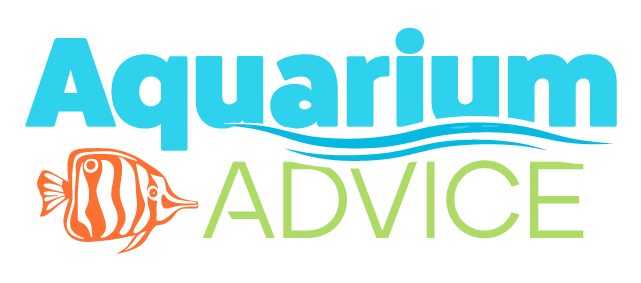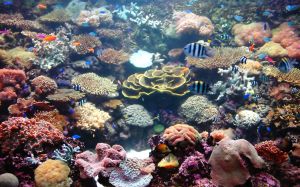Coral farming basics – chosing and propogating coral
This article was contributed by Aquarium Advice member Loganj.
Many of us have corals in our reef tanks. This can range from a few mushrooms to a tank full of SPS. Most of us probably paid a premium price for these corals. Quite a few of them were likely taken from wild reefs. There are several reasons to set up a small coral farm at home. Most of the popular corals in the aquarium trade lend themselves well to propagation. As the laws that govern wild collection of corals become more stringent, we will find ourselves becoming more dependent on captive propagated corals. So, what some of us consider an ecological responsibility may well become a necessity in the future. There is also the issue of supplemental income to be considered. Will a small scale coral farm ever be a primary source of income? Probably not. It would offset, if not completely cover, the costs of maintaining our other aquariums.
There are several corals that are very easy to propagate. The Zoanthids and Palythoa are probably my favorites. They grow quickly and don’t require perfect tank conditions. The Capnellas and Sarcophytons are also easy to grow. These are very popular and always sell quickly. Another excellent choice are star polyps’especially the green ones. Any Ricordia makes a great addition to your propagation tank. The brighter colors are the best as color is what sells. Ricordia does much better under bright lights. And, of course, everybody loves Xenia. Although Xenia doesn’t always ship well, it’s sure to be a big hit at the LFS. Individual care requirements, although beyond the scope of this article, are easily found on the internet.
Several different techniques are used to propagate corals. I’ll touch on a few of the more common ones mostly used with soft corals. Bear in mind that there are many different variations that work equally well. Most soft corals are propagated by taking cuttings either with scissors or a razor blade and attaching the cutting to a small piece of rock or a reef plug. Perhaps the most common method of attachment is with a gel type super glue. I have found the “Ross” brand to work the best. Bridal veil can also be used in conjunction with the glue to strap the cutting to the rock. With Ricordia and Zoanthids, the least invasive method is “natural propagation” where rocks are placed close enough for the corals to spread to them. They can then be separated into new colonies. A popular site for propagation methods is www.garf.org.
Although almost any non toxic container can be used to grow corals, the 20g long aquarium is great to start with. Besides being cheap and readily available, the long, shallow design is easy to light. Two 20 long tanks, a stand that will accommodate both tanks, a small overflow box, a heater, and a Maxi Jet 1200 powerhead will get you started. Should you wish to add a skimmer, and I use one, the small Lee CC skimmer does a surprisingly good job. Two 55w PC lights on each tank will provide enough light for any of the species mentioned in this article. Growout racks can be constructed from CPVC pipe, eggcrate, and plastic ties. An alternative, although more costly method, is to make the racks from acrylic with holes drilled for reef plugs. The Maxi Jet 1200 is used as a return pump. The tanks are set up one on top of the other with a DSB in the lower tank. I use a couple of Maxi Jet 400’s for extra circulation. I have about 20lbs of LR in each tank to help with biological filtration and to provide a hiding place for the pods. I use either small pieces of dry rock or reef plugs to attach the cuttings to. Instructions for making your own reef plugs can be found at www.garf.org .
The general requirements are not much different from a reef tank. I try to keep the temperature at 80* F and the SG at 1.025. A 200 watt Visi Therm heater has worked well for me so far. There are a plethora of products on the market to feed your corals. I have used the Kent Chromaplex, Phytoplex, Zooplex, CS Live Coral Food, and several others with decent results. I have had the best luck with my home made food though. There are many different recipes for this, but mine generally consists of whatever I can find in the seafood section at Kroger. It is run through the blender and frozen for later use. I use the smallest Lee CC skimmer in the lower tank. It is driven by a dual outlet diaphragm pump and pulls an amazing amount of gunk from the water. I’m thinking about cutting back on its use some. I believe keeping some small fish is good for the corals. I have 2 green chromis and a sailfin blenny in the top tank. A blue damsel resides in the lower tank. I have 6-8 astrea snails, 6-8 blue leg hermits, 4-5 cerith snails, and one emerald crab in each tank. They keep algae to a minimum and clean up any uneaten food.
In closing, I must say that this setup is one of the easiest to maintain that I have ever kept including my FW systems. There is a great sense of satisfaction to be had by watching the tiny frags grow and multiply. Bottom line? It’s a lot of fun! I can not emphasize enough the importance of increasing our reliance on captive raised corals. With the natural reefs in decline and the collection laws becoming more restrictive, propagated corals may be the only resource we have in the future. I would submit to you that there aren’t many things left that are fun, profitable, and ecologically responsible. Your coral tanks will qualify on all three counts.

